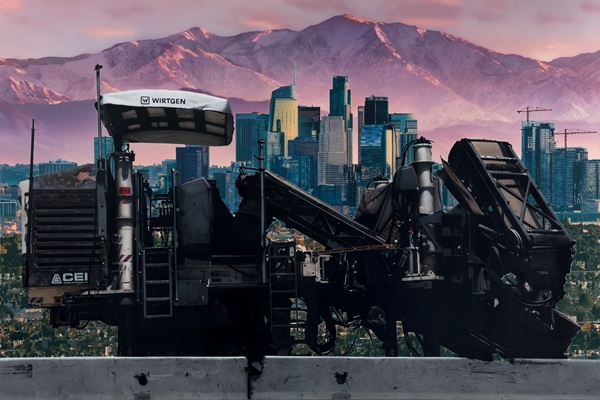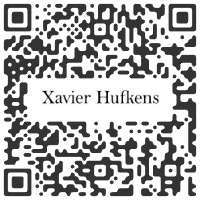"Heaven 'N' Earth"
Sayre Gomez

Xavier Hufkens
6 rue St-Georges | St-Jorisstraat Brussels, Belgium ![]()
Tel. +32 (0)2 639 67 30 E:
Multiple location : Bruxelles(2)


12 January > 2 March, 2024

In Heaven ‘N’ Earth, his second exhibition at Xavier Hufkens, the Los Angeles-based artist Sayre Gomez continues traversing the image-worlds of Southern California’s urban space. Gomez devotes his attention to the physical and cultural survival techniques of those left behind in the wake of capitalist development, with a sincere commitment to documenting traces of lived experience in the ruins of deindustrialisation. At the same time, his art acknowledges that any such realist project in the twenty-first century will inevitably be mediated by the hyperreality of technologised spectacle. The works in the show stage a clash between discrepant temporalities and ontological conditions: between products of the culture industry and their appropriation in obscure subcultural codes; between surface and depth; between the time of the image, the time of nature, and the time of the human organism.
True to its title, the exhibition progresses from “heaven” on the gallery’s uppermost level to “earth” (or perhaps even something below it) at the bottom. Discrete bodies of work in painting, sculpture, and video are distributed across all four floors of the gallery. Starting from the top, a skylight in the uppermost space casts natural light on a mixed-media sculpture, Scale Replica of the Past, Present, and Future (Peabody Werden House), installed in the center of the room (all works 2023). The Peabody Werden House is a Victorian bungalow that was constructed in the Boyle Heights neighborhood of Los Angeles in 1895. By then decrepit and facing demolition, in 2016 it was moved to an empty lot across the street following an outcry from preservationists. In subsequent years, however, funding for the house’s restoration dried up, leaving it a decaying hulk still sitting on its nominally temporary jacks. Once again suspended in limbo in the form of Gomez’s three-dimensional reproduction, the house emblematises the persistence of history in a working-class, but now gentrifying, neighborhood of Los Angeles—a city often erroneously described as being devoid of history altogether. Facing the sculpture on the four surrounding walls are luminous paintings of sunsets. Their compelling realism is ironised by exaggerated photographic lens flare effects. This arrangement ensures that, from whatever angle the house is viewed, a picture-perfect Californian backdrop is close at hand.
One floor below, the gallery contains a group of simulacral acrylic renderings of glass doors paired with Totem 3, a reduced-scale representation of a telephone pole. The door paintings are hung touching the ground, as if they were actual portals through the room’s architecture. The effect is to produce a ghostly evocation of a run-down strip mall. Also in this gallery are two paintings, titled after the thrash bands Slayer and Municipal Waste, which represent badly corroded advertisements for 99-cent grocery deals—a cruel irony, perhaps, in this new era of inflation. The ephemera of commerce thus survive its actual disappearance. All of these pictures are minutely detailed, registering the material degradation of plastic, paper, and metal as these substances mingle with ephemeral reflections. The door paintings are all titled That Which I Should Have Done I Did Not Do, in reference to a painting of a door by the Chicago magical realist painter Ivan Albright dating from 1931-41. Though seemingly stylistically distant, given their photographically realistic technique, Gomez’s canvases have a similarly hallucinatory maximalism. In one of his door paintings, the Warner Bros. character Taz, the Tasmanian Devil, swings from a vine, as if about to burst through the glass into the viewer’s space.
True to its title, the exhibition progresses from “heaven” on the gallery’s uppermost level to “earth” (or perhaps even something below it) at the bottom. Discrete bodies of work in painting, sculpture, and video are distributed across all four floors of the gallery. Starting from the top, a skylight in the uppermost space casts natural light on a mixed-media sculpture, Scale Replica of the Past, Present, and Future (Peabody Werden House), installed in the center of the room (all works 2023). The Peabody Werden House is a Victorian bungalow that was constructed in the Boyle Heights neighborhood of Los Angeles in 1895. By then decrepit and facing demolition, in 2016 it was moved to an empty lot across the street following an outcry from preservationists. In subsequent years, however, funding for the house’s restoration dried up, leaving it a decaying hulk still sitting on its nominally temporary jacks. Once again suspended in limbo in the form of Gomez’s three-dimensional reproduction, the house emblematises the persistence of history in a working-class, but now gentrifying, neighborhood of Los Angeles—a city often erroneously described as being devoid of history altogether. Facing the sculpture on the four surrounding walls are luminous paintings of sunsets. Their compelling realism is ironised by exaggerated photographic lens flare effects. This arrangement ensures that, from whatever angle the house is viewed, a picture-perfect Californian backdrop is close at hand.
One floor below, the gallery contains a group of simulacral acrylic renderings of glass doors paired with Totem 3, a reduced-scale representation of a telephone pole. The door paintings are hung touching the ground, as if they were actual portals through the room’s architecture. The effect is to produce a ghostly evocation of a run-down strip mall. Also in this gallery are two paintings, titled after the thrash bands Slayer and Municipal Waste, which represent badly corroded advertisements for 99-cent grocery deals—a cruel irony, perhaps, in this new era of inflation. The ephemera of commerce thus survive its actual disappearance. All of these pictures are minutely detailed, registering the material degradation of plastic, paper, and metal as these substances mingle with ephemeral reflections. The door paintings are all titled That Which I Should Have Done I Did Not Do, in reference to a painting of a door by the Chicago magical realist painter Ivan Albright dating from 1931-41. Though seemingly stylistically distant, given their photographically realistic technique, Gomez’s canvases have a similarly hallucinatory maximalism. In one of his door paintings, the Warner Bros. character Taz, the Tasmanian Devil, swings from a vine, as if about to burst through the glass into the viewer’s space.
mpefm BELGIUM art press release
Gallery Hours :
Tue-Sat 11am-6pm

Gallery Hours :
Tue-Sat 11am-6pm
QR of this press release
in your phone, tablet









